Behind thousands of heirloom pieces that passed from generation to generation, fine Cashmere even now continues the spree of mesmerizing women and men alike. And while fashionistas and designers all over the world are repeatedly blending them with silks to give them a particular drape and silhouette, its puritans who remain loyal to the ancient art, and demand pure, handmade, luxury Cashmere wraps.
Where is Cashmere from?
The word cashmere itself can be traced back to Kashmir. When Europeans came to know about the finest fibre being discovered in Kashmir, they visited the valley in flocks. It is them who gave the name ‘Cashmere’ to the wool which was locally called ‘Pashm’. Cashmere was the anglicization of the word Kashmir, as Europeans have their own accent.
It was the 15th century when for the first time Cashmere was discovered in Ladakh, Jammu and Kashmir. A Persian saint, who had travelled to Kashmir, discovered it growing on a goat. He ordered socks to be made out of it. The socks were so soft and smooth, that he gifted the same to the King. The king, highly impressed with the quality and feel of processed Cashmere immediately ordered processing units to be made for Cashmere. Now raw wool would be transported to Kashmir from Ladakh, and the entire processing would be done by Kashmiri craftsmen. These craftsmen had been trained by the 700 masterly skilled artisans from Persia.
Where does Cashmere come from?
Cashmere comes from China and Mongolia. These two regions are the highest producers of Cashmere, and about 90% of the world's Cashmere is produced by these. Other than these two, it is found in Iran, Nepal, and Myanmar. The best and the finest variant of Cashmere, however, is Ladakh. The Ladakh region in Jammu and Kashmir (India) produces the highest and best quality of Cashmere in the world.
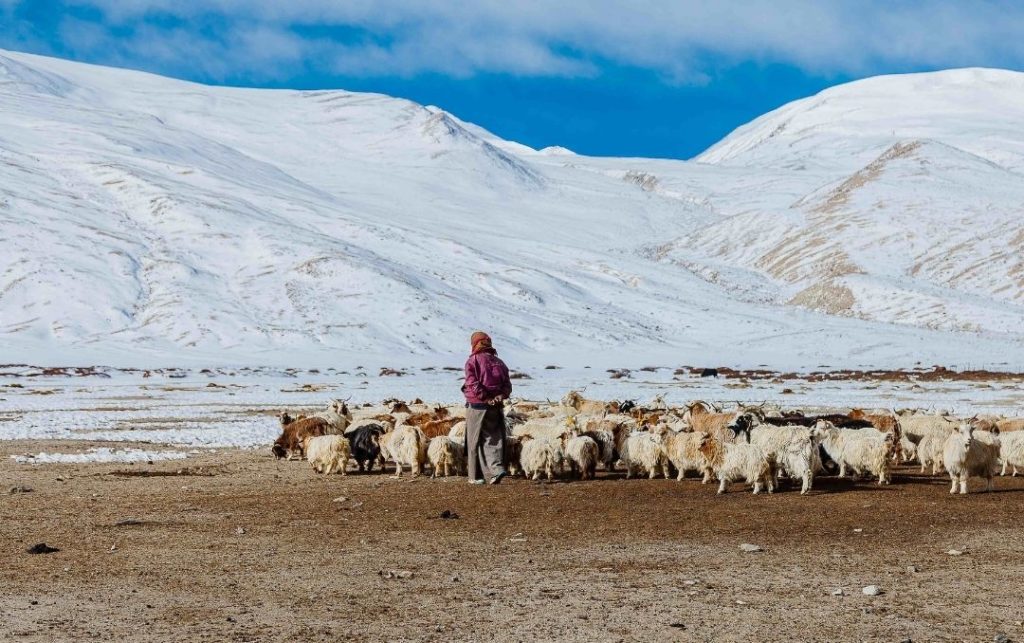
In Kashmir, the extraordinarily fine Cashmere comes from a goat, but not any common goat species. It comes from rare species of goats which are found in Changthang, Ladakh. It is finer, lighter, and warmer than its counterparts. Besides, it is also 8 times warmer than sheep wool. And its best use is considered in crafting Kashmiri Pashmina shawls locally.
It is Changpas, the local Nomadic tribe who rear the Changthangi goat and have been doing so for centuries. These nomadic tribes travel from everywhere in Ladakh to Changthang in the months of winter, so that the goat naturally grows the fibre. They set up migratory residential tents, and live the hardest of lives for the attainment of the luxury ‘soft gold’ Cashmere.
Also read: The Trail of India’s Cashmere Goat Men
What is Cashmere made from?
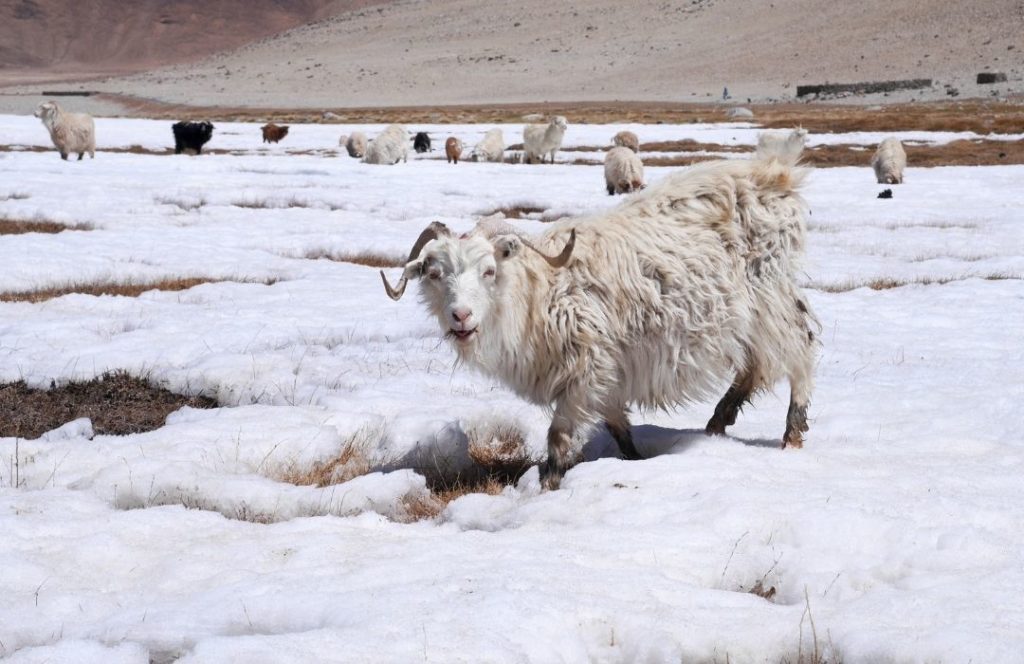
It is winters, when Cashmere is grown on the goat's neck, underbelly, behind the ears, and other few places. In Spring, it is the moulting season, the goat sheds this wool naturally, and it is collected by its herders. This wool is cleaned, packed and sent to Kashmir, where processing units await the arrival of a treasure.
Hence your cherished Cashmere shawls and wraps are made from goat hair, just that the goat is a rare and exotic species.
How is Cashmere made?
Often people who invest highly in it, never know how it is made. Today, we demystify the entire process of the making of their favourite Cashmere apparel and accessories.
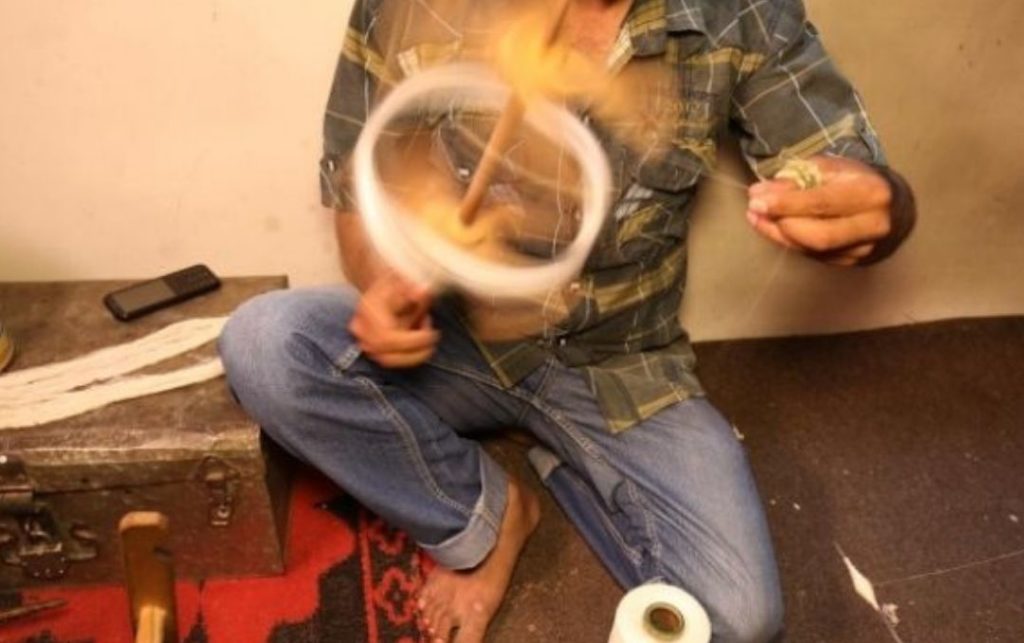
As soon as Cashmere wool reaches Kashmir, it is sent for cleaning. Usually, women do it, but men might help too. Clean wool is placed in rice powder, for 3 days, till the wool attains a particular texture, smoothness and strength. It is then cleaned thoroughly, and taken for the most crucial step - Spinning
Spinning Cashmere is notoriously difficult. That's because the fibre is exceptionally fine and delicate. Hence it is done manually with the help of a spinning wheel made of wood, where a lump of wool becomes yarn. This yarn has a diameter of just 12-16 microns. Post this it needs to be woven together.
Weaving too is done manually over wooden handlooms, where 2-3 men sit together and hand-weave these yarns into fabric. Opulent shawls, scarves, and apparel come out of these handlooms after days of meticulous labour.
Traditional Designs vs Modern Designs
As far as the designing of Cashmere wraps goes, traditional as well as contemporary designs are available in the markets today. Traditionally Wraps would be either plain, embroidered or the Kani shawls. As such, the use of luxury Pashmina shawls was reserved for women over 30 years of age, or those who were married. But with time, the young generation too desired to wear Pashmina, for the comfort as well as extraordinary grace it exuded. But wouldn't heavily embroidered shawls and Kani shawls look too much on a teenager? Hence, Kashmir introduced modern design Pashmina scarves and stoles for them.
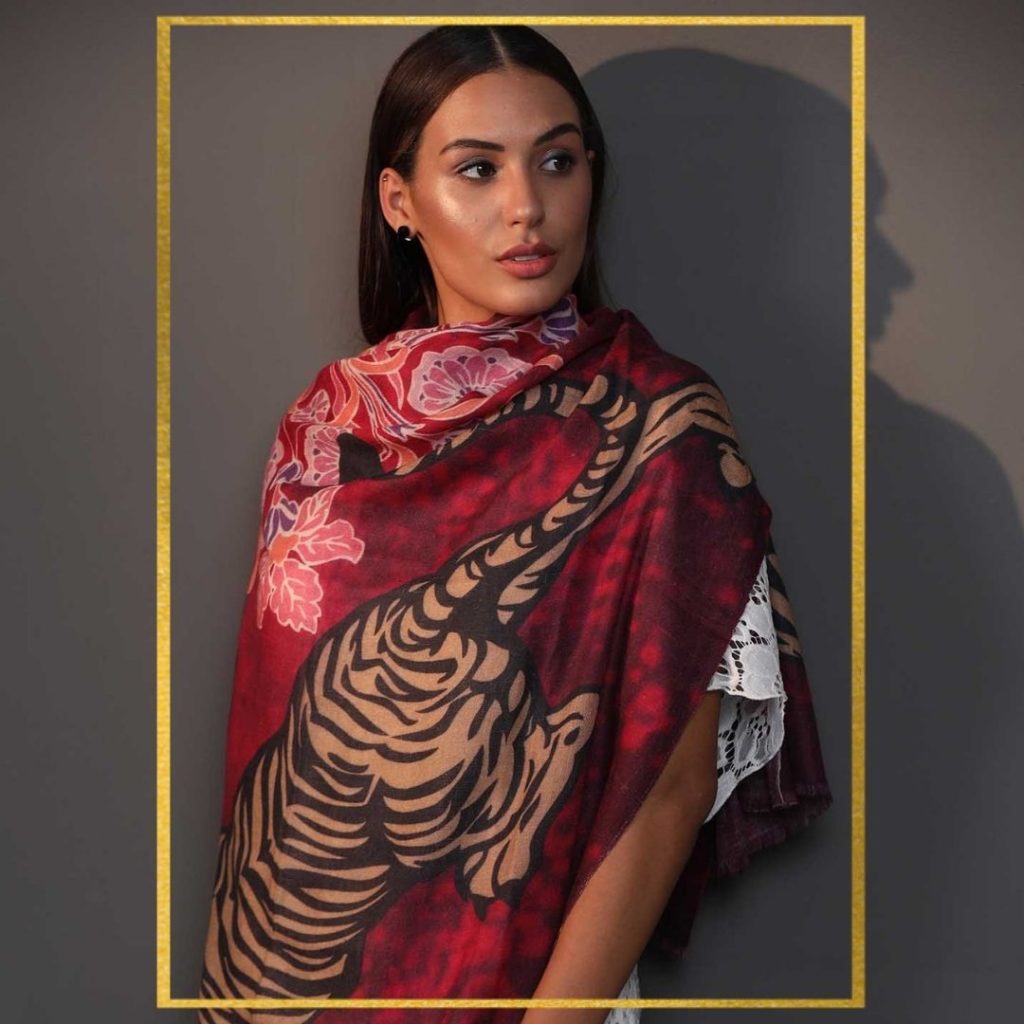
Animal prints, floral prints, stripes, checks, plaids and tartans, customizable logos, and laced wraps are some modern design Cashmere wraps. These scarves are easily carried by young women, even girls for casual or formal occasions. Be it get-togethers, farewell parties or a semi-formal visit to a relative who lives far, Cashmere wraps in modish patterns never looks overdone.
Also read: 7 Reasons Why Women Love Cashmere
Price of a Luxury wrap
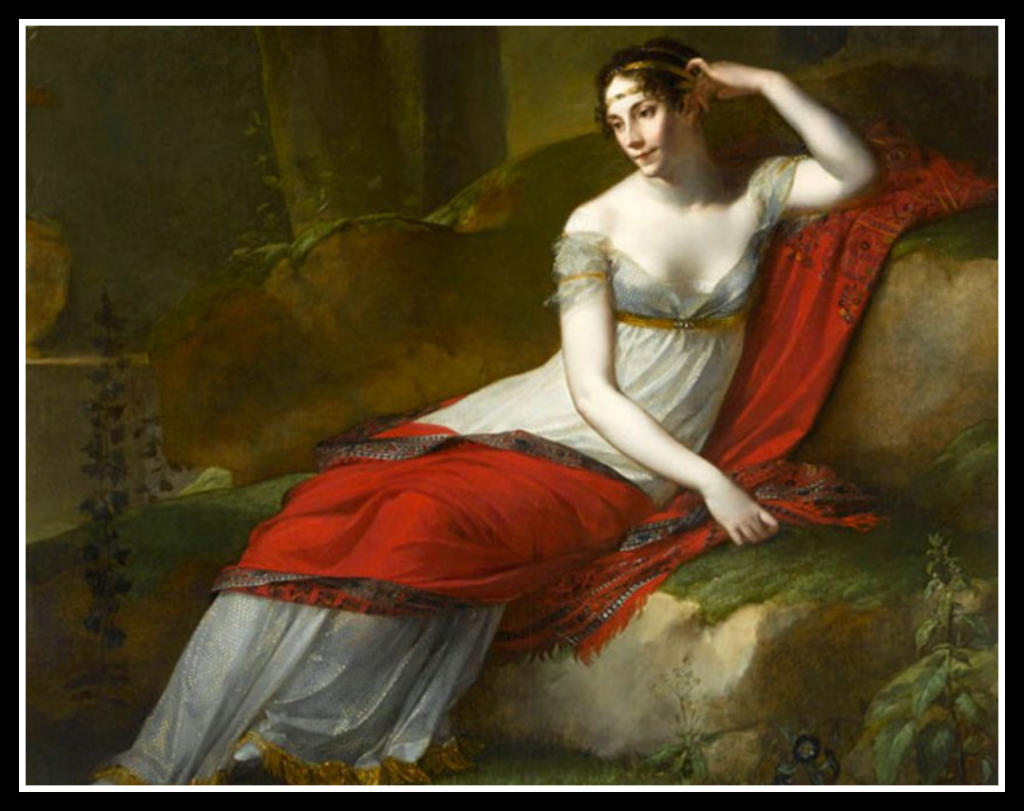
Being a combination of artisanal skills and the impeccable quality of the wool, Cashmere wraps are expensive. And even though many refrains from buying Cashmere wraps for the high price tags, we would like to point out several factors that account for making it extravagant
- Cashmere is a rare fibre. It grows on the goat just once a year, and that too a small quantity. One goat produces around 150 grams of wool per year.
- The procurement of raw wool from the goat is really difficult. The ones do risk their lives as they have to travel dangerous roads to get to the herders.
- The finesse of the fine wool is amazing. Cashmere is just 12-16 microns in diameter which makes it one-fourth of human hair.
- The skill that goes into making wraps and apparel out of Cashmere is perfect, as well as real hard work. Artisans work for months or sometimes years to complete one single piece.
- The fine wool is exceptionally warm, lightweight, fine and stylish. This makes it versatile and one of the cherished fabrics.
- Cashmere has been one of the most revered and enshrined entities ever. From local rulers to those around the world, every wealthy individual owned many pieces of the same. Its admiration is even now demonstrated when one looks at the painting of Empress Josephine, wearing a Kani shawl.
Also read: Kashmiri Shawls During the Dogra Period